Radio
“Technology is nothing. What’s important is that you have a faith in people, that they’re basically good and smart, and if you give them tools, they’ll do wonderful things with them.”
— Steve Jobs
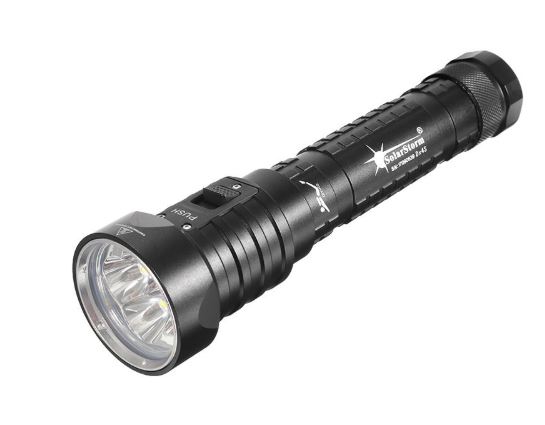
Some time ago I purchased a Solarstorm DX4S diving flashlight. Price was very tempting and I decided to give it a try. Got mine for 40 $ from Banggood. I must say I was quite skeptical since this was no proven manufacturer like Scubapro or Halcyon, but figured out that I needed a strong lamp for camping anyway so, I decided to order it and then inspect it a little bit. If it looks like it could actually survive high pressures underwater I would take it scuba diving. If it doesn’t look like solid built (no o-rings, plastic instead of the tempered glass protecting the reflector etc.) I would keep it as a home/car/camping lamp. So it would be a win-win experiment.
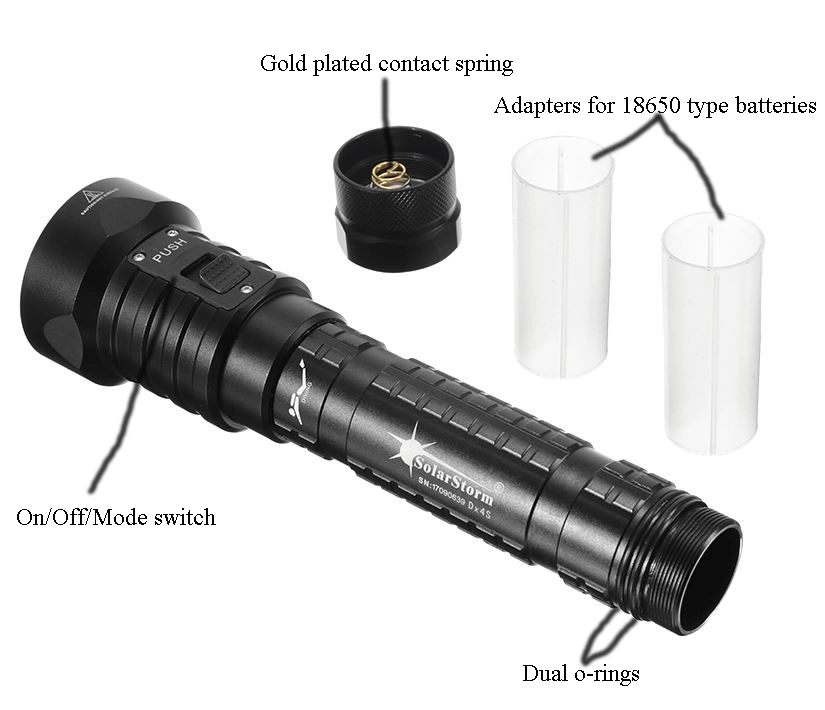
The flashlight is powered by two 26650 or 18650 batteries. If you are going to use 18650, you have to put them into supplied adapters (yes they come in a box with the flashlight). It is a quite big flashlight and it fits the arm great. The switch is big enough, well placed and easy to operate even wearing 5mm neoprene gloves. It just slides up and down. One time up it is on, one more up the flashlight is off. If you hold it pulled up for a moment it will change mode. The flashlight has 3 modes, High, Low, and Blinking or Strobe mode. I have no equipment to measure output lumens. Only judgment was my subjective visual experience and from that part, I`m more than happy. When you turn it on in a room at night, it scares the shit out of the dark, and the light level is almost like regular lights are on. At first, I could not believe that handheld lamp is producing so much light. The beam is not too wide, and yet not to narrow. It is perfectly balanced and I like it both underwater and on land.
At the bottom, there are two o-rings that take care of the keeping water out of the lamp. They do a perfect job since I never saw even a single drop of water between them. It means one ring is enough, the second one is just a safety precaution. Bottom cap has a gold plated contact spring, and I never had a problem with batteries losing contact. When operated on dry, it heats up much after few minutes of working so I think that it is ok to use it on short terms, but it should not be on for a long on dry because there is no water cooling it that way. It is definitely an underwater battery and should be treated that way – with respect.
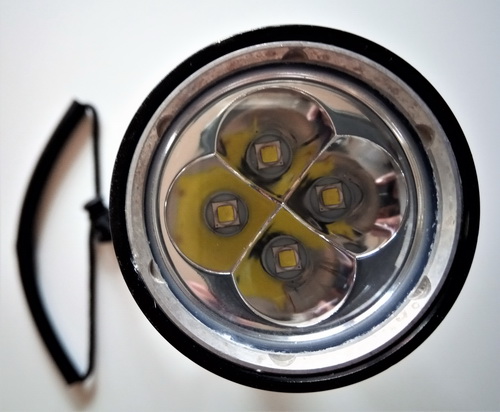
The flashlight has four CREE L2 U2 emitters, each rated at 2 W, and that would be total 8 W of power. L2U2 has a working voltage of 2.85 volts. If we take in the calc that four of them is 8W / 2.85 V we will come to 2.8 A. Later I will display what I measured, and it will prove that all numbers are ok and real.
| Product name: | Solarstorm DX4S Diving LED Flashlight 60M |
| Brand: | Solarstorm |
| Model: | DX4S |
| Emitter Type: | L2 U2 |
| Material: | Aluminum alloy |
| Total Emitters: | 4X |
| Mode: | High–Low-Strobe |
| Runtime: | 1h53min,4h20min,7h10min (26650 battery) |
| Lumens: | 3200lm-350lm-3200lm |
| Battery Configurations: | 2 x 18650/26650 battery (not included) |
| Switch Type: | Magnetic resetting switch (change the modes) |
| Switch Location: | body side of the flashlight |
| Lens: | Impact-resistant glass lens |
| Reflector: | Metal smooth reflector |
| Carrying Strap: | included |
| Waterproof: | 60 meters underwater. |
| Color: | black |
| Weight: | 374 g without battery |
| Size: | 214mm x 55mm x 34mm(length x head x tail diameter) |
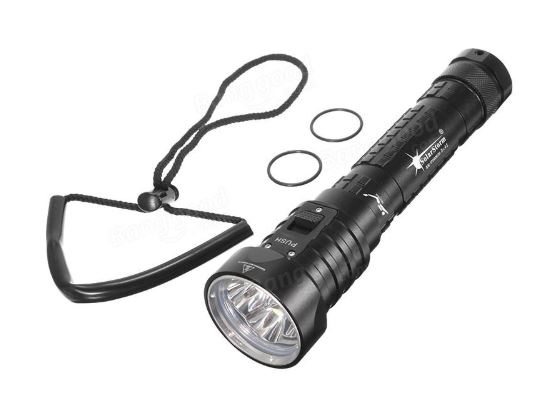
Its declaration says that it is 60 meters water resistant, and I took it to 58 meters. It survived so the manufacturer did not lie. I personally think that it can survive more than 7 bars of pressure but let’s be realistic here, what do you want from a 40 $ flashlight? 60 meters is deeper than most regular users will ever dive, and at that depth, you are entering the technical diving area so you need another kind of equipment. I have it now for two years, used it in APNEA and SCUBA diving, and in general have all positive experiences.
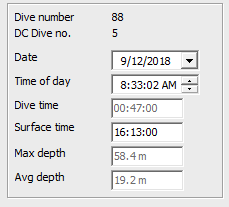
Here are a few pictures and video showing how it looks to dive with this lamp. There are pictures from day and night diving, so you can experience how much light it produces, how big it is in the arm, and what do you get underwater in general.
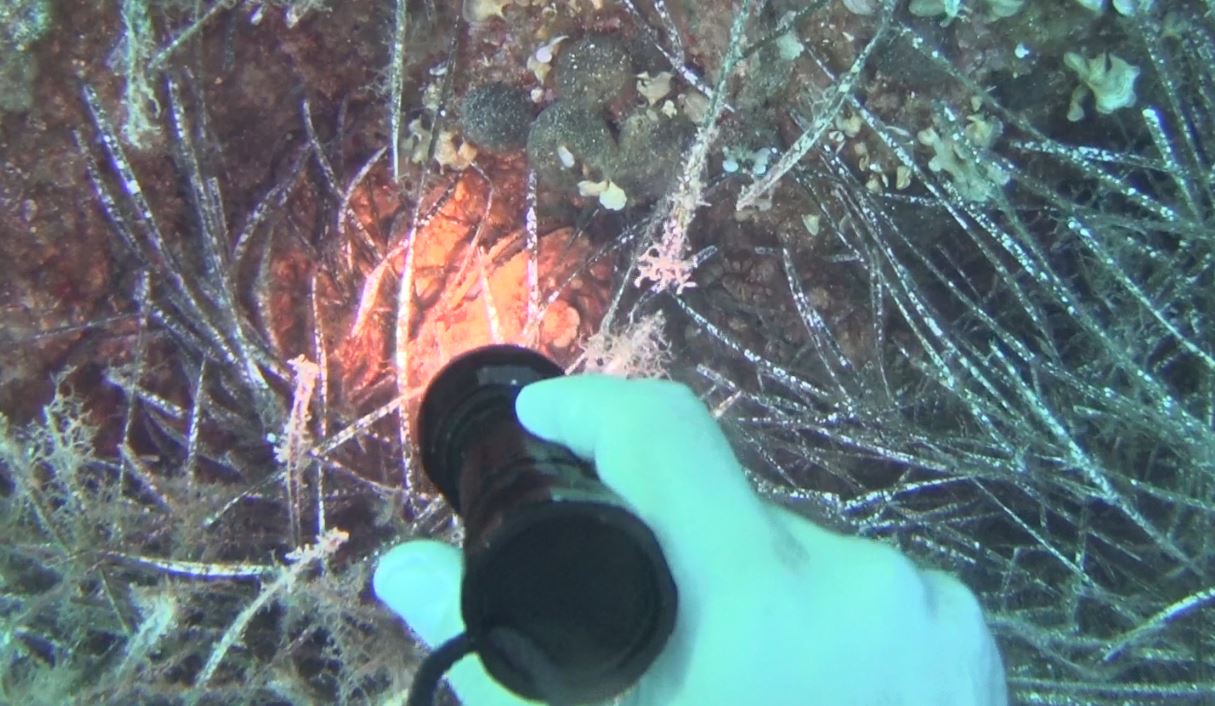
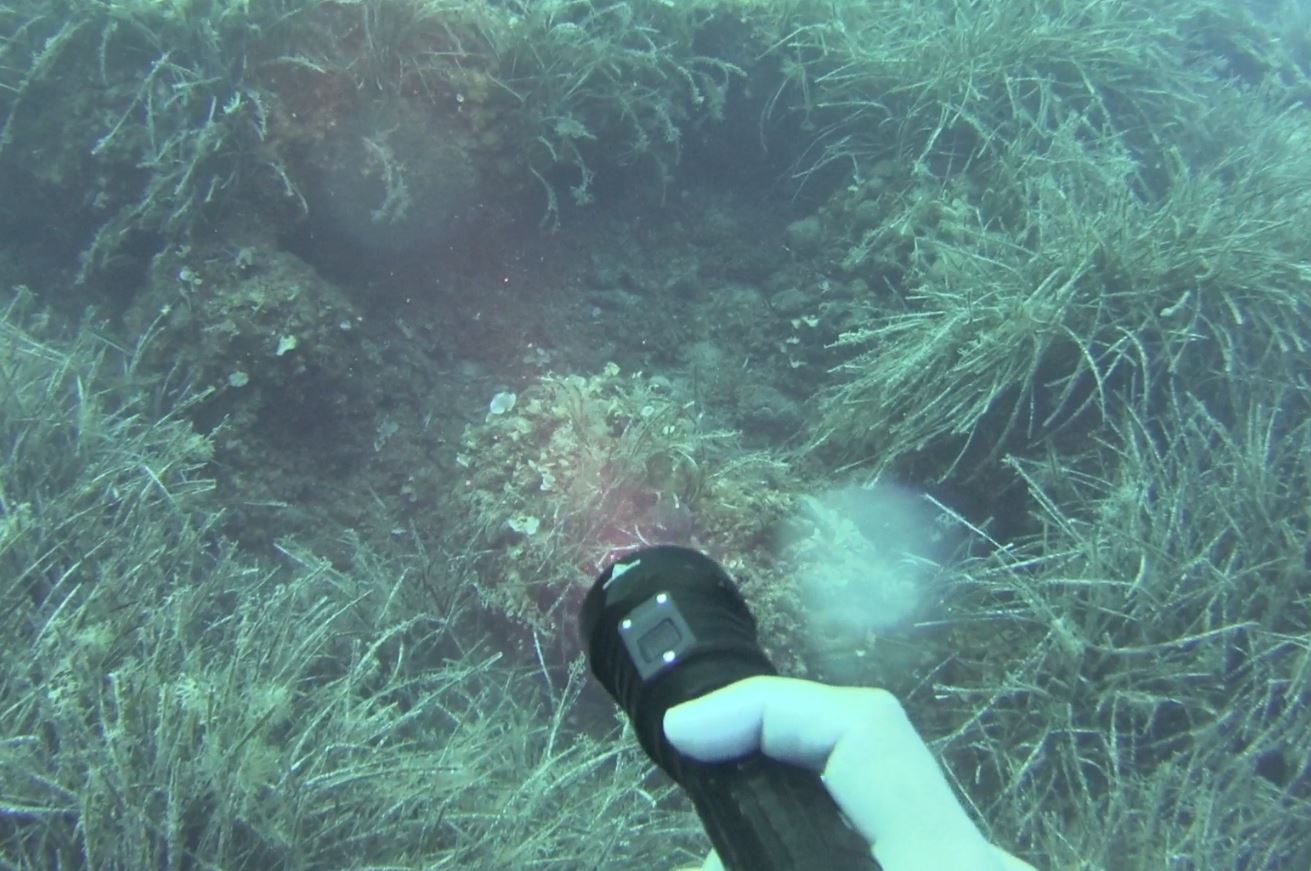
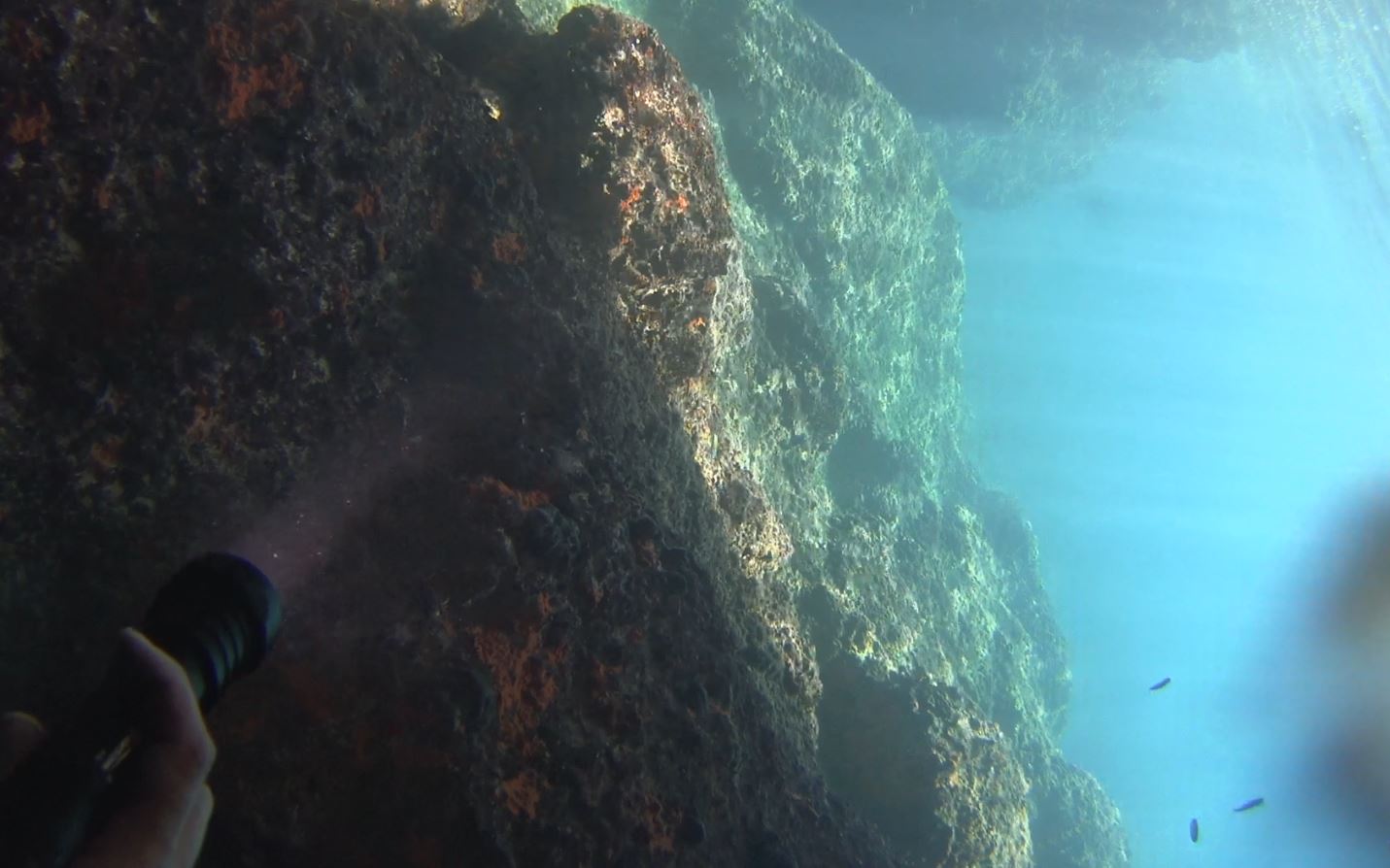
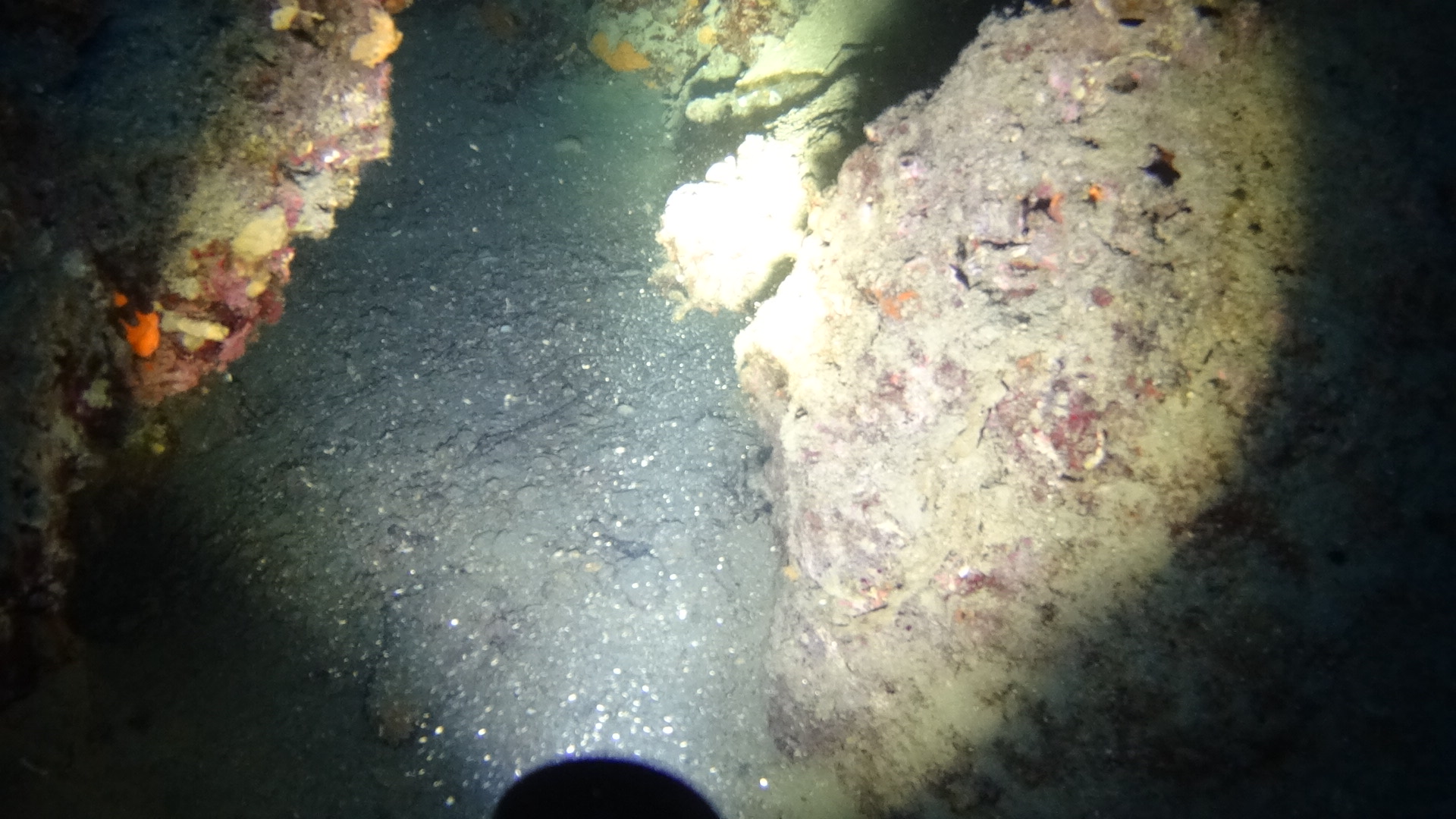
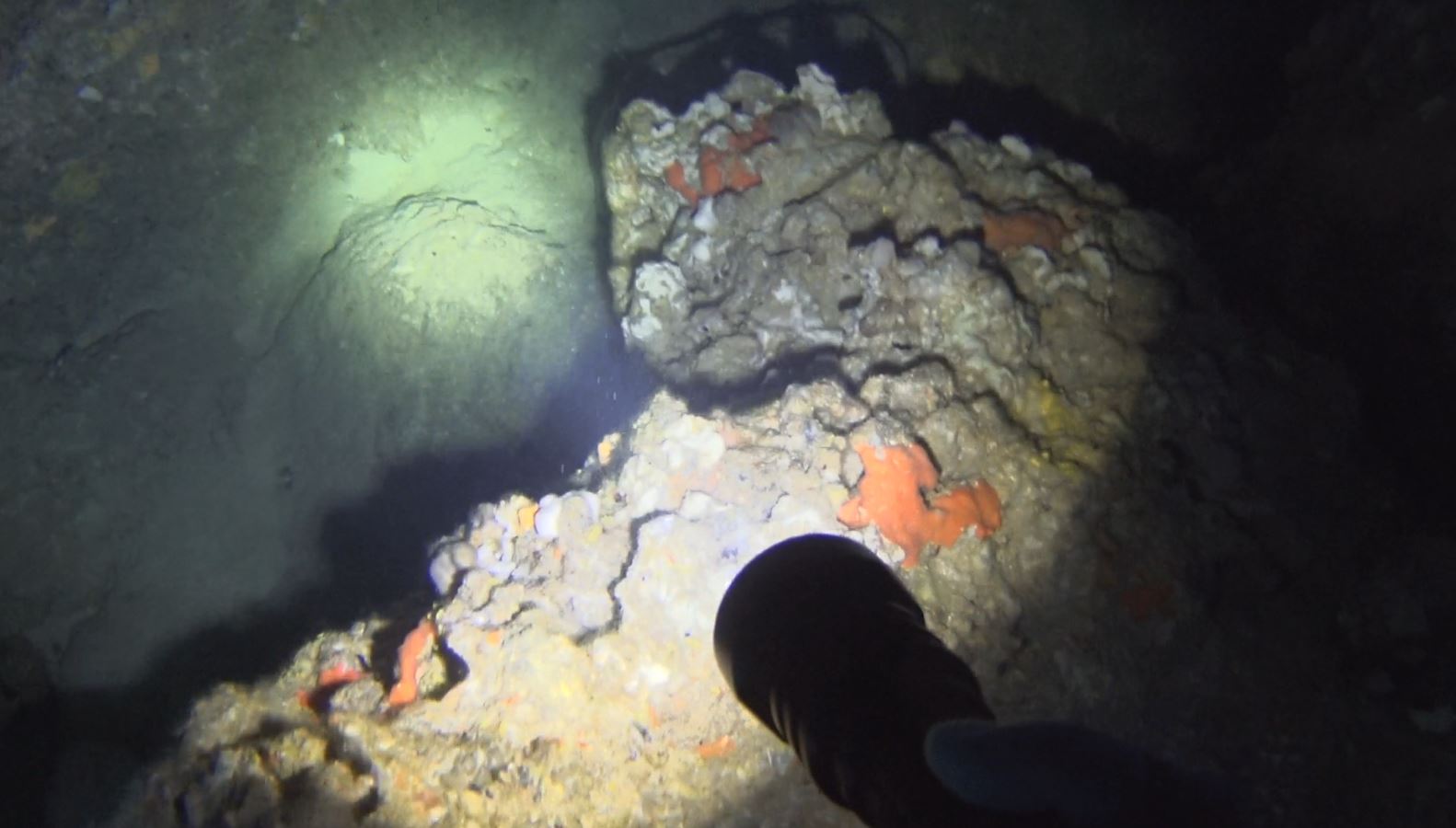
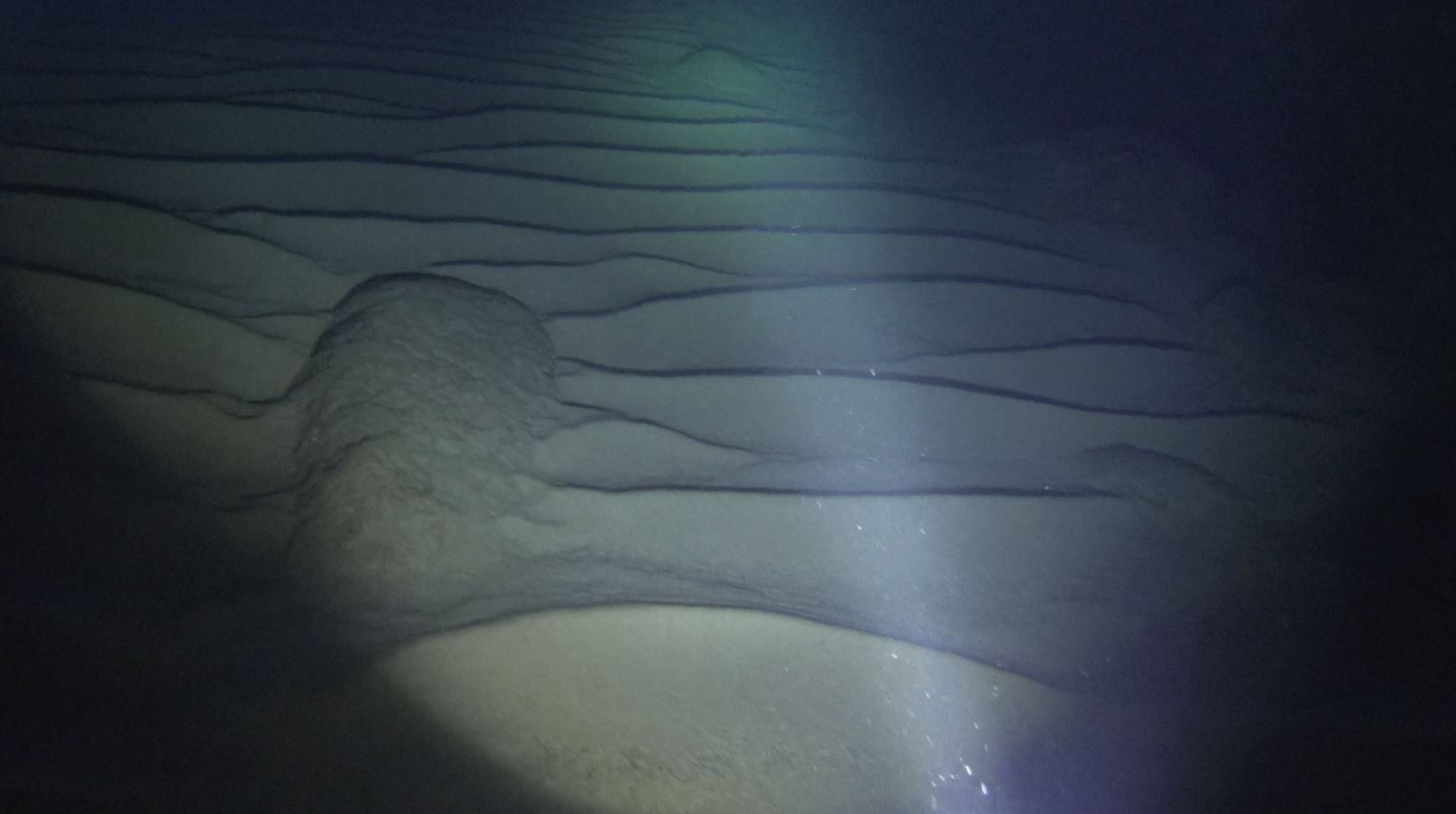
Title of this paragraph may sound stupid and absurd, but on the sea bottom there are plenty masks, knives, lamps, and other objects that belonged to people that “knew how to do it”. I use a double-sided diving carabiner to secure the flashlight. One side I secure to battery hand strap and the other side to my wing`s harness. So it is locked near my right shoulder, and it has enough cord to freely use it, and move around. When not used, or in hand I just put the battery under the belt so it is not just hanging below me, hitting the bottom or making any other type of mess. It`s kind of DIR philosophy and makes a perfect sense.
As mentioned before it can be powered by two 26650 or 18650 batteries. As logical 26650 are bigger and can have the larger Ah (Amper hours) capacity so they are the first choice. A good thing about 18650 cells is that you have them in every laptop battery.

Maybe you can remove some of them from an old or damaged battery pack of a laptop computer. Usually, there are 6 or even more cells in a package, and one or a few of them is destroyed, but the rest is working and has the excellent capacity. You only need two of them so you have great chances to get lucky. I scavenged one nonworking Asus battery pack and got 5 out of 6 in working condition. They are in the picture above.
If you have any decent charger, it will do the job for you and test batteries. What I want to say is that if charger start and after some hours finish charging process, the cell is ok. If it displays any type of error, it means the cell is damaged, and you should throw it away and try the next one.
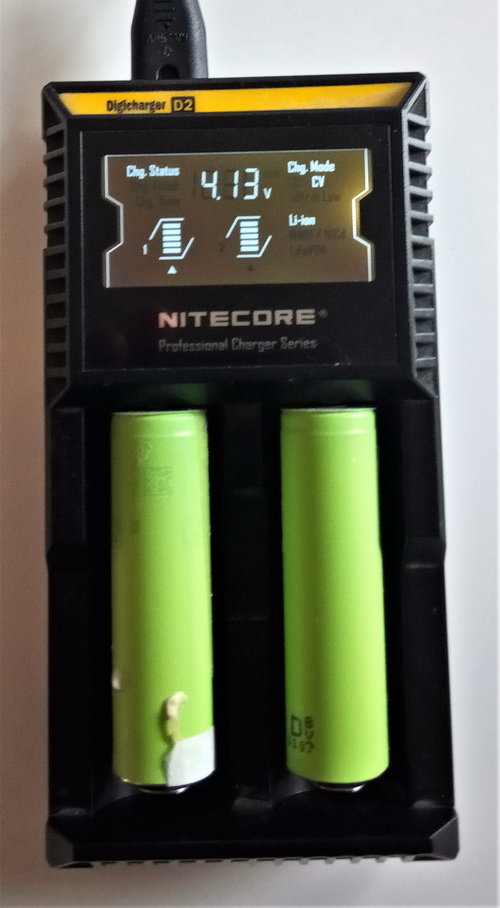
And remember, there are marked places where it is ok to dispose of the batteries. Anyway there is one thing to be aware, or so to say beware, and that are scum batteries. There are many brands claiming insanely big capacities for just a few bucks. If it sounds too good to be the truth then in most cases it is not, so avoid buying the cheapest batteries. The same thing is a with a charger. I personally use this Nitecore Digicharger D2 ( D4 version has 4 batt slots) and it is a great charger. If you want the best for your batteries this charger will do a great job. Back to the lamp now.
What I measured on high setting is 2.7 A. On the low setting it is 0.86 A. It means that with 18650 cells you can get around 50 minutes of light at full power or a little bit over a 2 hours an low power mode. For 26650 battery type, with 4.2 Ah capacity, it is a little bit more than 90 minutes at high power mode or near 5 hours of light in low power mode. In both cases, it is quite ok for regular dives especially for day open water dives where you do not keep the lamp on the whole time.
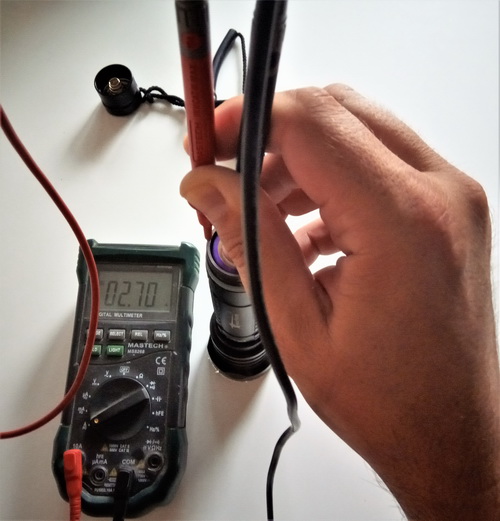
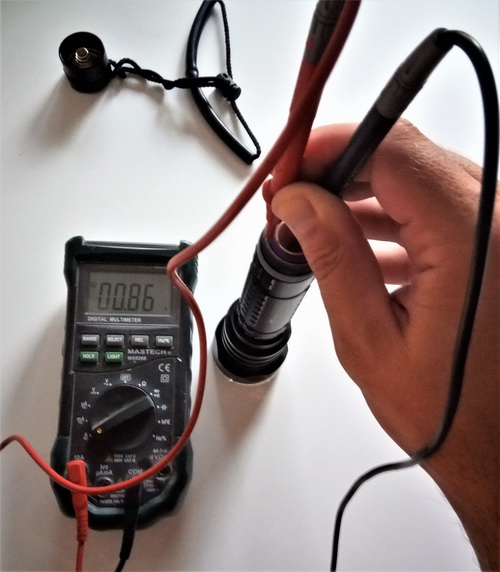
I noticed there is something wrong with the flashlight after having it for a few days. I would charge the batteries and put them into the flashlight. It worked like a charm. Then I would leave it be since it is not something I use on a daily basis. After a week or more, when I needed it there was no light coming out. I started to investigate what is wrong. Batteries had no juice. So I taught that I got junk batteries. Shit happens, right? I charged the batteries again, and everything looked fine. But this time I would not fall for the same trick again. I did some measuring and here is what I discovered.
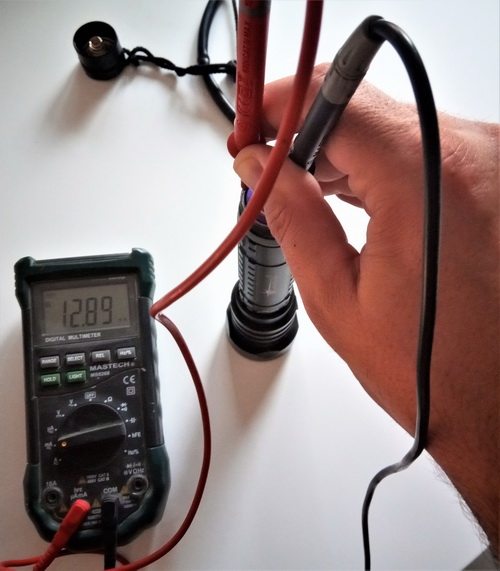
When turned off, the lamp takes about 12.89 mA from the batteries. It must be a driver problem or a construction error, but I did not want to disassemble it. Now that I knew what the problem was it was possible to fight it. So basically it will drain 0.3 A / Day from batteries if you put them inside. For regular 18650 cells, it is draining around 13% of capacity per day. If you charge batteries just a few hours before the dive (and that is the best thing to do), you won’t feel the difference, but if for any reason you can’t do it that way, you need to do something about this problem.
The trick is to screw the bottom cap completely and then unscrew it for approximately one turn. When you try to turn it on it will not work, until you screw it back so it won’t drain batteries. Good thing is that at that position of the cap, both o-rings are actually covered inside the cap so water can`t get in. So you have something like safety switch and little more to think about, but it does the job. It is really not a big deal to do it. This is the only objection that I have found for DX4S.
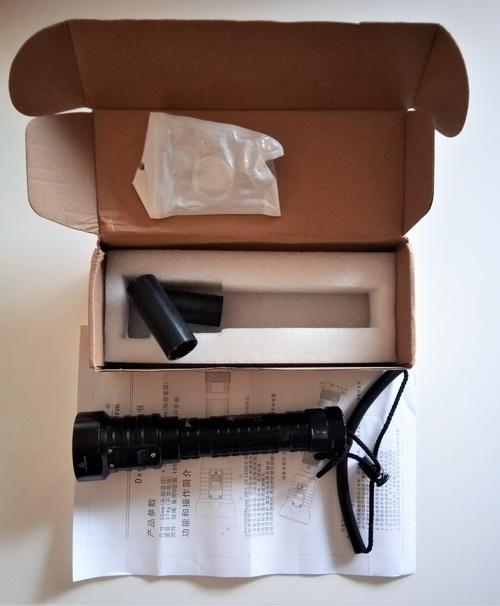
The flashlight has no hard case or carrying bag, it comes in the cardboard box, with two spare o-rings, adapters for 18650 batteries, and some kind of manual on one piece of paper, and in a Chinese language only. So, you can throw away manual, it is pretty much useless if you don`t eat plenty of rice every day. Let’s just say that it comes packed well enough to survive postal services and that is it. You do not buy a thing like this for its packing, so it`s not so important at the end. English manual would be a nice upgrade, but let us remember, it is just a lamp :). Just one more recommendation at the end. Get some silicone grease and put it on the o-rings. It is a good thing to do once in a while. Summa summarum, this is a great flashlight and you get decent quality for your money. Remember, wherever there is light, there is also something to see, and there are only two things that should come out to the surface from a dive, (except a diver of course 🙂 ) bubbles and photos. Happy diving 🙂
Thank you for reading,

Posted in DIY, Tech Tavern, Video Tagged with: Dive lamp, Diving flashlight, DX4S, LED, Led lamp, SCUBA DIVE, Solarstorm, Solarstorm DX4S, Solarstorm DX4S dive lamp, Solarstorm DX4S diving flashlight, waterproof lamp

We all witnessed that some everyday gadgets were foreseen in SF movies and series. We all know that tablet as we know it was first introduced on starship USS Enterprise, that idea for flying hoverboard comes from “Back to future”, space travel was invented as the imaginary concept by Jules Verne, and Donald Trump was created for…… why?! 🙂 The action cam is not different…
Let’s get back to our story before we go in the completely wrong direction…

Some of you may remember one of the most famous sentences in recent human history: ” We came up with a camera, so tiny it fits into this oversized novelty hat“.

Government guys reported project as a complete success, funding was tripled (for some reason taxpayers got one more row on their tax form) and after Homers field testing it was obvious that idea has great potential. People at GayPro later got their hands on some leaked blueprints, and you know the rest. Action Cam as we know it today was born.
This will not be a traditional guide or test. This time I will try to give you a few tips and tricks on how to do better with your action cam for less money. How to customize it`s casing, and accessories to suit your needs.
So, first of all, let`s ask ourselves why do we need an action cam? You probably already have a smartphone, and maybe even a DSLR, and both devices can create pretty decent or even great video. So why buy another camera? Why buy a camera without a zooming function? The answer is simple, you can`t take any other type of video recording device with you almost anywhere. The action cam is a small, resilient, wide-angle, and the lightweight little device that can fit almost any surrounding and occasion, from the drone to surfboard, from motorcycle to diving mask. The idea is to have something to record your memories without disturbing your surroundings and making itself to intrusive in a way that your normal behavior in given situation changes, so you lose those spontaneous moments. Put in a right casing you can give it to your child and get the first-person shooting, and your child`s memories from an entirely new perspective. I have Sony FDR-X1000V action cam, and I did not buy it because it is better than GoPro or any other camera, I just always loved Sony cameras, and this one also had a stereo Microphone, and that we’re the only decision-making reasons. So this story is not about what is the better device, it is how to get the most of your device, how to be creative, and also to avoid stupid marketing tricks that sellers use to take your money, and as Dire Straits would say get you in a “Money for nothing” situation.
What GoPro started…..
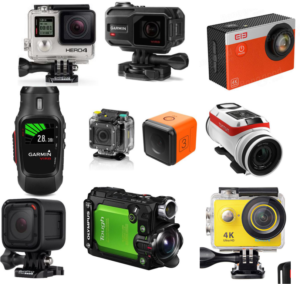
Just to mention that many players went into this action cam race, and now even manufacturers that we know about for completely different products (like Garmin and TomTom) are announcing and producing action cams. Even TELCO`s came in with 4G action cams ?! This has only proven that concept has a bright future, and since manufacturers competition is getting bigger so we as buyers and users can expect better devices for less money. What an exciting time we live in………..
Let`s demystify letters in the name, FDR-X1000V and FDR-X1000 are the same device, but “V” version is with Live View Remote Bundle.

This remote is quite useful as a training tool since you have a live view option and with using it you get some perspective what is your camera actually recording. If you used some regular cameras especially with high zooming capabilities, you will need some time to get used to this small camera viewing angle. The best way to do it is a live view, and it is definitely a better option than record video as it is and than later figure out that you missed vital pieces of your recording scene. Another great feature of this bracelet is that you can easily adjust some basic camera settings, like the switch from video rec to picture shooting mode, and most important, start or stop shooting. Its connection with the camera is 2.4 GHz Wi-Fi, and at the open live view works like a charm in distances up to 20 meters. Indoors is a little different situation, at best it will give you usable streaming next room only. Any bigger distance, or two wall separation, creates connection problems. The same room situation works perfectly, and since this remote is designed as a bracelet, by default you should be always quite close to the camera. The remote bracelet is waterproof to a depth of the water of 3 m (10 feet), for 30 minutes continuously so don`t take it for a scuba diving, since it will be destroyed. Swimming and snorkeling around the surface are ok, but then again underwater it is quite useless since it loses connection with 50 cm distance from the camera. A most vivid example is front crawl swimming with the camera attached to your head, and remote on your arm. In most cases when your arm goes underwater, remote will lose connection. This is not making you any problems regarding recording, but it is a bit annoying to look at the remote display and see the message that the connection is lost, especially if you intended to start or stop recording via remote at that very moment. Here is a Sony statement regarding the subject: “Although the remote control is designed to be waterproof, the Wi-Fi® signals cannot travel underwater. Therefore, it cannot be used underwater to control a camera.” So do not complain that it is not working underwater since it is not intended for underwater use. Sony made remote control unit waterproof so you do not need to worry about jumping in the water while wearing it.
So the conclusion about this remote is that it is a great accessory in every case except water and underwater environment. If you are gonna go swimming remove it from your arm, and turn it off.
Now, back to camera, here are some main specifications:
Waterproof performance:
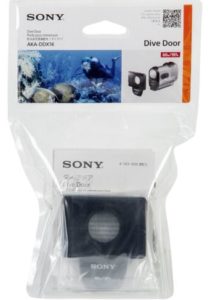
The depth of water 10 m (33 feet), 60 minutes continuously (In use with the waterproof case (SPK-X1). It means you can get it to 10 m depth and leave it there for 1 hour, and your camera will be ok.
The depth of water 60 m (197 feet) Sony AKADDX1K Underwater Housing Kit. I did not find any time-related data, for maximum depth. One more thing to know when shopping for this thing is that there are few options available. There is only a door replacement option since it looks like that the rest of the case is the same and already strong enough for 60 M depth pressure. Weird thing is that this 60 replacement door cost almost 70 $ at eBay and online stores. Another better option is to buy AKADDX1K Underwater Housing Kit and I found it at Amazon for 40 $. With that kit, you get a complete 10 M waterproof case, and the 60 M waterproof door, so if you need to go deeper than 10 m, just replace the door and you are good. No tools are needed for replacing the door, and the time it takes is less than a minute. There is a link for a kit that I purchased here, and this is how it looks like:
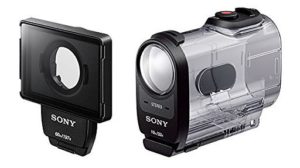
So pay attention to what are you buying, because on this example I’ve shown you that you can buy just a dive door for 68 $, or complete housing with the same dive door for 40 $. One more thing, if buying online, and not sure ask a seller before you buy since sometimes it not so clear what comes in the package. I saw a situation where a picture is displayed complete case with a door, but you would actually get just the 60 m door. I did not investigate so much for other cameras, but I saw some same pattern regarding accessories, so when you decide to go shopping, first investigate, and compare, and if needed ask some questions. When you know your stuff well, only then you can unleash the “buy it now” button :).
Now back to specifications…
Splashproof performance: Equivalent to IPX4.* It means that you should be able to splash it with water and there will not be problems with the camera. There is a “*” after this statement, and here is an explanation offered by Sony: Splashproof performance is based on standard testing by Sony.I wrote to Sony regarding this and asking for more information, and here is their answer: “Unfortunately, we in the technical support can not provide information that is outside the guidelines provided by the Sony website. We can only say that “IPX4” designation signifies that your device is protected against splash water, regardless of which direction it comes from“.
Image device:
1/2.3 type (7.81 mm) Exmor R CMOS sensor
Pixel Gross: Approx. 12.8 megapixels Effective picture resolution (movie): Approx. 8.8 megapixels (16:9) (SteadyShot is set to [OFF])
Effective picture resolution (still): Approx. 8.79 megapixels (16:9)
Lens: ZEISS Tessar
Lens Aperture: F2.8 Focal distance: f = 2.8 mm Focal length (35 mm equivalent) (Movie mode): f = 17.1 mm (16:9) (Movie, SteadyShot is set to [OFF])
FOV: 170° (SteadyShot is set to [OFF])
I will not explain all these since you can find better explanations on some photography related sites than I could ever offer. I will only comment that real CMOS resolution of its sensor is 8.79 megapixels, and that field of view is 170° and that is quite wide, but only when SteadyShot is off. When it is on FOW goes lower, but I was not able to find exact numbers.
Camera:
Exposure control: Automatic exposure
Minimum illumination: 6 lx (Lux) (0 lux cameras can actually “see in the total dark”)
Image stabilization: Electronic SteadyShot image stabilization
Minimum shooting distance: Approx. 50 cm (19 3/4 in.)
File format:
Movies: MP4: MPEG-4 AVC/H.264, XAVC S: MPEG-4 AVC/H.264
Audio: MPEG-4 AAC-LC 2ch (When recording MP4 movies), LPCM 2ch (When recording XAVC S movies)
Still images: JPEG (DCF Ver. 2.0, Exif Ver. 2.3, MPF Baseline) compliant
Recording media:
When recording MP4 movies: Memory Stick Micro (Mark2) media microSD/SDHC/SDXC card (Class4 or faster)
When recording XAVC S (50Mbps/60Mbps) movies: microSDXC card (Class10 or faster)
When recording XAVC S (100Mbps) movies: microSDXC card (UHS-I U3 or faster)
Pay attention to the write speed of the memory card you intend to use with your camera. Buy the fastest one at the start, since the camera won’t let you use some recording modes if a memory card is not fast enough.
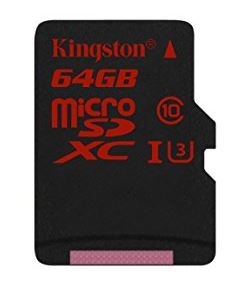
This is the memory card that I use, and I can confirm that it works like a charm with all video modes and settings. I purchased it on Amazon and here is the link if you want to use it as a starting point.
These are video modes that I use in most cases:
For everyday video:
1080 60p 50 M Recorded image: XAVC S 50 Mbps Resolution: 1920×1080 Imaging frame rate: 60p/50p
For slow-motion video:
720 240p 100 M Recorded image: XAVC S 100 Mbps High speed recording Resolution: 1280×720 Imaging frame rate: 240p/200p
Keep in mind that if you are gonna do shooting at high frame rate speeds, in this case, 240 p, you are going to need much more light, so prepare your environment and do some testing before you proceed with the actual shooting.
Read more of this article »Posted in Video